Starting fresh with a bookkeeping client is a bit like setting the stage for a play. First impressions count, right? The first act involves understanding who they are and what they need. It’s not just about crunching numbers; it’s about building trust, setting expectations, and making sure you’re both on the same page from day one. A smooth onboarding process, clear communication, and staying compliant are key to a successful partnership. Let’s explore what makes this process tick.
Key Takeaways
- First impressions are crucial. Understand your client’s business needs and set clear expectations from the start.
- Streamline the onboarding process by gathering essential documents and using automation tools to handle repetitive tasks.
- Maintain a strong relationship with your client through open communication, addressing concerns gracefully, and celebrating milestones together.
Setting the Stage: First Impressions Matter
The Art of the Welcome Email
Ah, the welcome email—the digital handshake of the business world. It’s your first chance to show off your style and let your new client know they’re in good hands. Think of it like crafting a love letter, but for business. You want to strike the right balance between professionalism and warmth. Include a brief intro about your services, a personalized note that makes them feel special, and a clear outline of next steps. Trust me, a well-crafted welcome email can make your client feel like they’ve just been handed a VIP pass to the best show in town.
Crafting a Personalized Onboarding Experience
Imagine walking into a new restaurant where the chef knows your favorite dish before you even sit down. That’s the kind of personalized experience you want to create for your clients. Start by gathering some intel—what are their business goals? What keeps them up at night? Use this info to tailor your services to their needs. A little customization goes a long way in making your client feel valued and understood. Plus, it sets the stage for a long and happy business relationship.
Building Trust from Day One
Trust is like a delicate soufflé—it takes time to build but can collapse in an instant. From the get-go, be transparent about what you offer and what you expect in return. Lay out the ground rules clearly, so there are no surprises down the road. Regular check-ins and open communication are key. And remember, a little humor and relatability can go a long way in breaking down barriers and building a solid foundation of trust. After all, in the world of bookkeeping, trust isn’t just important—it’s everything.
Streamlining the Process: Efficiency is Key

Automating the Onboarding Workflow
Alright, let’s be real—no one wants to be stuck in the never-ending loop of repetitive tasks. That’s where automation comes in to save the day. Imagine having a digital assistant that handles the mundane stuff, like syncing bank transactions or generating those pesky monthly reports. Tools like Zapier or QuickBooks can be your best pals here. You set them up once, and they just keep doing their thing, leaving you more time to focus on the exciting parts of your business. Automation isn’t just a luxury; it’s a necessity.
Essential Tools for a Smooth Transition
Switching over to a new bookkeeping service doesn’t have to be a bumpy ride. With the right tools, you can glide through the transition. Think of software like QuickBooks Online or Xero as your trusty sidekicks. They keep everything organized and accessible, whether you’re at your desk or on the go. And don’t forget about document management tools like Hubdoc or Receipt Bank that make paperwork a breeze. Having these in your arsenal ensures that your clients’ financial data is always at your fingertips.
Time-Saving Tips for Busy Bookkeepers
Hey, time is money, right? So, let’s talk about some hacks to save you both. First off, batch your tasks. Instead of switching between different types of work, focus on one thing at a time—it’s way more efficient. Next, set up templates for emails and reports. You’ll be amazed at how much time you save when you don’t have to start from scratch each time. Finally, make the most of your calendar by scheduling regular check-ins with clients. This keeps everyone on the same page and prevents last-minute scrambles. Remember, a little planning goes a long way in keeping your sanity intact.
"Efficiency isn’t just about doing things faster; it’s about doing things smarter. By automating and organizing your workflow, you can focus on what truly matters—helping your clients succeed."
Communication is Everything: Keeping Clients in the Loop
Regular Check-Ins and Feedback
Alright, let’s face it—communication is like the secret sauce in any relationship, and your client-bookkeeper bond is no different. You want to be the bookkeeper who not only crunches numbers but also listens and responds. Make it a habit to check in regularly, even if it’s just to say, "Hey, everything’s on track!" This builds trust and makes your client feel valued. Consider setting up a monthly call or a quick email update to keep things transparent. Remember, a happy client is a loyal client!
Addressing Concerns with Grace
Ever had a client who seemed to be in a constant state of panic about their finances? It’s like they’re starring in their own financial thriller. Your role? Be their calm in the storm. When concerns pop up, address them promptly and with empathy. Acknowledge their worries, provide clear explanations, and offer solutions. This approach not only resolves issues but also strengthens your relationship. And who knows, you might even turn their financial nightmares into dreams of balance sheets and profit margins!
Celebrating Milestones Together
Who says bookkeeping can’t be fun? Celebrate those small victories with your clients. Did they finally hit their quarterly targets? Maybe they managed to save a bit more than expected? Throw a mini celebration—send a congratulatory email or even a small gift. It’s these little gestures that show you care about their success as much as they do. Plus, it makes the whole bookkeeping process a bit more human and a lot less like a math class.
"The beginning of a client relationship is like planting a seed. Nurture it with understanding and clear communication, and it will grow into a fruitful partnership."
Beyond the Basics: Going the Extra Mile

Tailoring Services to Client Needs
Alright, so you’ve got the basics down. But how do you make your bookkeeping services stand out in a sea of spreadsheets? The answer is simple: customization. Every business is like a snowflake—unique in its own way. Get to know your client’s specific needs and tweak your services to fit like a glove. Maybe they need help with cash flow management or just a hand organizing those pesky receipts. Whatever it is, make sure your services cater to their individual quirks and requirements.
- Identify key areas where your client needs support.
- Customize your approach to match their business goals.
- Review and adjust your services regularly to ensure they remain relevant.
Offering Value-Added Services
Why stop at bookkeeping when you can be the Swiss Army knife of financial services? Offering value-added services can transform you from just another bookkeeper to a trusted business partner. Think beyond the numbers—offer insights into tax strategies, financial planning, or even software training. These extras not only add value to your client’s business but also strengthen your relationship with them.
Consider these additional services:
- Tax planning and advice
- Financial strategy sessions
- Software setup and training
Ensuring Long-Term Satisfaction
Keeping clients happy over the long haul is like maintaining a good friendship—it requires effort, understanding, and a bit of fun. Regular check-ins and feedback sessions are key. Celebrate their milestones, like hitting a financial target or surviving tax season without a meltdown. These little gestures show that you care, not just about their books, but about their success.
"A happy client today is a loyal client tomorrow, and that’s the kind of math every bookkeeper should love."
By going the extra mile, you’re not just a bookkeeper; you’re an integral part of your client’s success story. And who knows, maybe one day they’ll be sharing their bookkeeping success story thanks to your efforts!
Wrapping It Up: Your Bookkeeping Adventure Awaits!
So, there you have it, folks! The ultimate checklist to kickstart your bookkeeping journey with new clients in 2025. It’s like setting up a first date, but with numbers and spreadsheets instead of dinner and a movie. Remember, the key is to keep things simple, clear, and a little bit fun. After all, who said bookkeeping can’t have a dash of excitement? With this checklist, you’re not just ticking boxes; you’re building relationships that could last a lifetime. So go on, dive into the world of ledgers and invoices with confidence. Your clients will thank you, and who knows, you might just find yourself enjoying the ride too. Cheers to a future filled with balanced books and happy clients!
Frequently Asked Questions
What is bookkeeping onboarding?
Bookkeeping onboarding is the process of welcoming and setting up new clients with the bookkeeping services they need. It involves understanding their business, setting expectations, and ensuring all necessary information and systems are in place.
What should be included in a welcome email for new clients?
A welcome email should thank the client for choosing your services, include an overview of what to expect next, and provide any necessary information or documents they might need. It’s a way to start the relationship on a positive note.
How can I make the onboarding process smoother for my clients?
To make onboarding smoother, use a clear checklist, automate repetitive tasks, and keep open communication. Regular check-ins and feedback can help address any concerns quickly.







